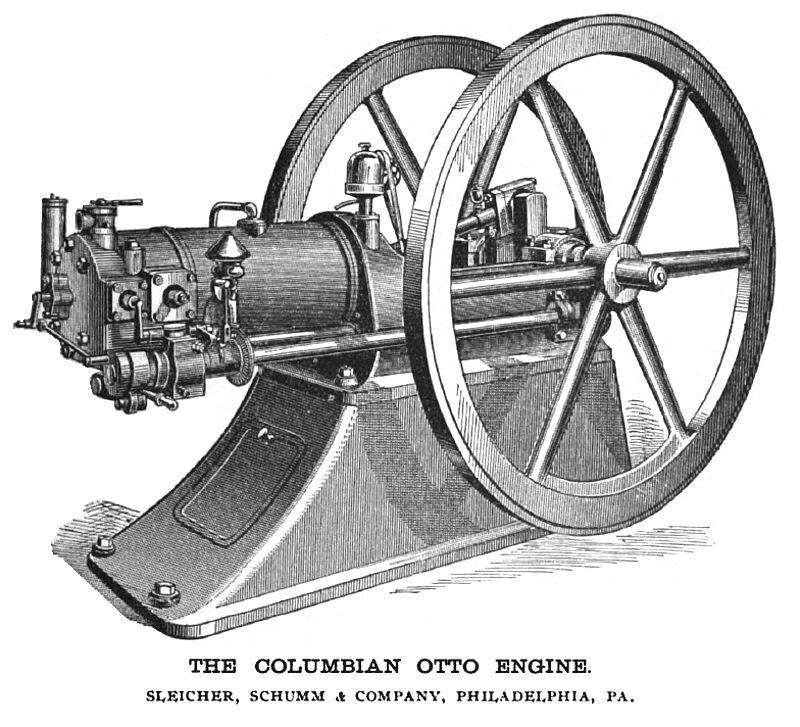|
Title: |
1894 Article-Schleicher, Schumm & Co., Columbian Otto Gas Engine |
|
Source: |
Industry Magazine, Mar 1894, pg. 175 |
|
Insert Date: |
12/7/2012 1:30:44 PM |
Among American exhibitors of machinery at the Columbian Exposition no other firm was placed in such peculiar circumstances as Messrs. Schleicher, Schumm & Co., of Philadelphia, makers of the Otto gas engines in this country. They not only had to maintain the very high standard of their work at home, but had to emulate the parent works at Deutz, in Germany, who sent ten finely-constructed engines, also the French makers at Paris, who sent several engines.
These three works employ collectively 2,000 men, and produce annually 2,500 engines. The works at Manchester, England, must produce at least 2,000 more, so the whole product is 4,500 engines a year, for gas, gasoline and petroleum, these modifications relating only to the methods of supplying or generating the gas.
The modern gas engine, which may be said to have originated with Dr. Nicolaus Otto, has become a great fact in modern industry.
The manufacture of engines is but a trifle when compared to their uses and economies as prime movers. The manufacture was established about twenty years ago, and the total number produced by the various firms making the Otto engines must be 30,000 or more.
One reason for the success of these engines was the high standard of workmanship assumed from the very beginning. The first made in this country for Messrs. Schleicher, Schumm & Co. were constructed at Messrs. Bement & Dougherty's, now Bement, Miles & Co., of Philadelphia, machine-tool makers, where all the precision of these famous works was brought to bear. The editor of this Journal was a fellow-passenger and room mate with Mr. Schleicher when he first came out to this country, and on the journey examined data from the works at Deutz, which was then the most completely-organized establishment of the kind that had come to notice.
These remarks are suggested by the firm sending a drawing of a late design for their standard engines, shown at the head of this article, a new feature of which is the segregation of all parts liable to wear, so they may be replaced if required without delay or much loss. The main thing, however, in a communication sent, is the statement that in this latest design the consumption of gas has been reduced to "fifteen cubic feet per hour" for each indicated horse power. In the American exhibit at Chicago the consumption of gas by the Otto engines was 16½ cubic feet an hour for each horse power. One engine exhibited there was of 120 horse power, and another of 60 horse power. |
|
 1894 Schleicher, Schumm & Co., Columbian Otto Gas Engine
1894 Schleicher, Schumm & Co., Columbian Otto Gas Engine
|
|